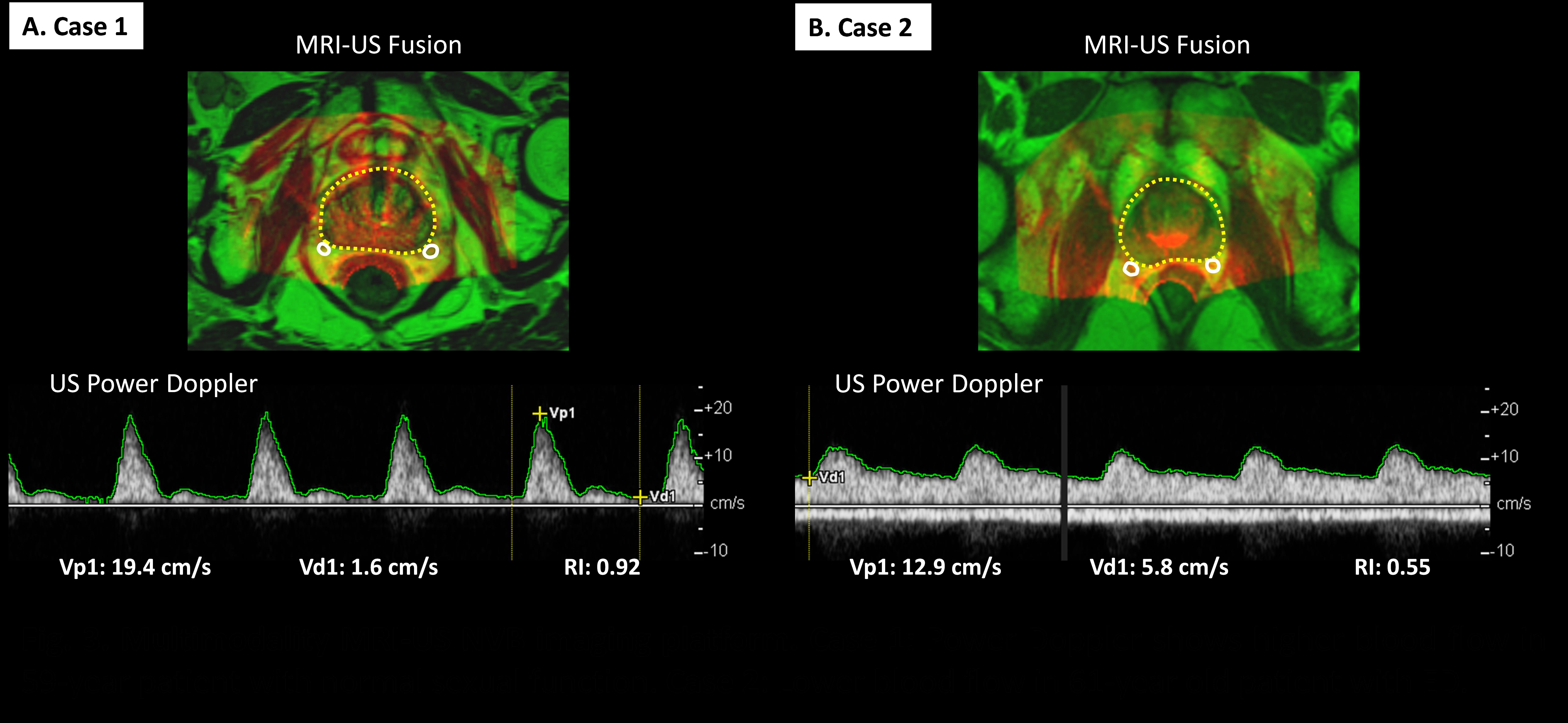Prostate Cancer
Preserving Sexual Function in Men Undergoing Radiation Treatment for Prostate Cancer



Posted September 11, 2020
Tian Liu, Ph.D. and Ashesh Jani, M.D., Emory University


One of the most common complications experienced by men undergoing radiotherapy for prostate cancer is decreased sexual function. Radiation can damage blood vessels and nerves surrounding the prostate, resulting in erectile dysfunction over time and highlighting the need for new nerve-sparing therapies. Some researchers theorize that this side effect could be due to injury to the neurovascular bundles (NVB) surrounding the prostate, which are difficult to visualize with current imaging techniques. Because sexual dysfunction can occur in up to 50% of men undergoing radiotherapy, there is a need for non-invasive imaging techniques that could spare the NVB, thereby increasing quality of life for prostate cancer patients.
With support from a FY16 Idea Development Award (Established Investigator – Partnering PI Option), Dr. Tian Liu and Dr. Ashesh Jani at Emory University are developing and testing a multimodality imaging platform to measure NVB injury caused by radiation. Dr. Liu’s team is currently developing the technology, which will combine magnetic resonance imaging (MRI) and ultrasound, to measure radiation-related NVB injury (Figure 1). Dr. Jani has been leading a clinical study to validate results of the platform and correlate findings with standard clinical endpoints to evaluate erectile dysfunction. The team will also conduct a feasibility study to investigate the ability of this novel technology to improve sexual potency through NVB-sparing radiotherapy.
To date, the research team has created a unique prostate phantom with NVB components for pre-clinical testing and develop a method to analyze Doppler waveforms obtained from ultrasound imaging. This Doppler technology provided more accurate blood flow measurements surrounding the prostate. During radiotherapy treatment planning, clinicians use a process called segmentation to accurately determine prostate boundaries to localize radiotherapy and spare healthy tissues. To overcome the time-consuming process of manual segmentation of the prostate during transrectal ultrasound (TRUS), Co-Investigator, Dr. Xiaofeng Yang, and the team developed a multidirectional deep-learning method to automatically segment the prostate during TRUS-guided radiotherapy, which was published in Medical Physics.1 In addition, the team developed a weakly supervised learning-based MRI-TRUS image registration which could quickly fuse MRI with TRUS to help the NVB localization.2 A total of 28 subjects have been recruited for the clinical study, 18 (64%) of which are African American men to provide a more diverse set of patient outcomes. Additionally, an imaging and outcomes database has been developed to correlate the team’s images with patient reported outcomes and clinical data, in hopes to further optimize and validate the platform in patients.
Results from this study could allow physicians to prevent NVB injury due to radiotherapy and potentially adjust radiation dosage during radiotherapy treatment planning. This work could also lead to new nerve-sparing therapies for prostate cancer patients that would preserve sexual function and increase quality of life.

Figure 1. Multimodality MRI-US NVB imaging platform. Case 1: Power Doppler shows NVB blood flow of 59-year old patient with normal sexual function. Case 2: Lower NVB blood flow in 61-year old patient with erectile dysfunction.
References:
- Lei Y, Tian S, He X, et al. 2019. Ultrasound prostate segmentation based on multidirectional deeply supervised V-Net. Med Phys 46(6):3194-3206.
- Zeng Q, Fu Y, Tian Z, et al. 2020. Label-driven magnetic resonance imaging (MRI)-transrectal ultrasound (TRUS) registration using weakly supervised learning for MRI-guided prostate radiotherapy. Phys Med Biol. 65(13):135002.
Link:
Public and Technical Abstracts: Multimodality Imaging Platform for Neurovascular Bundle Sparing Prostate Radiotherapy to Preserve Sexual Function
Last updated Thursday, December 5, 2024














